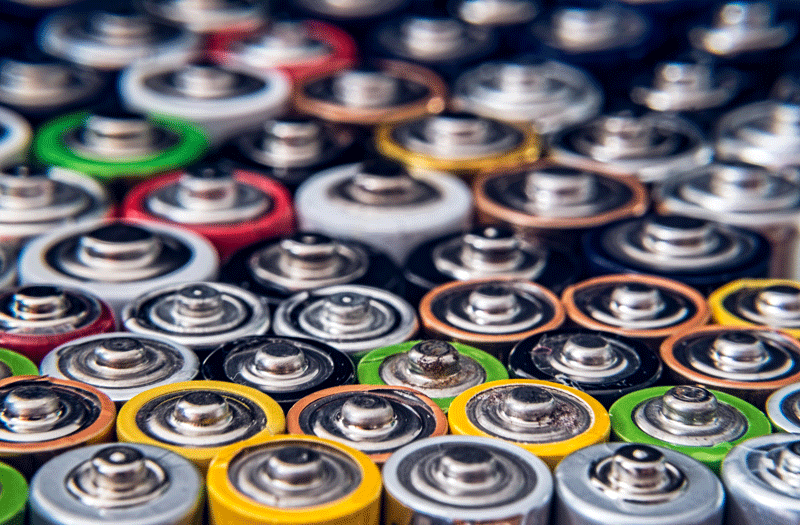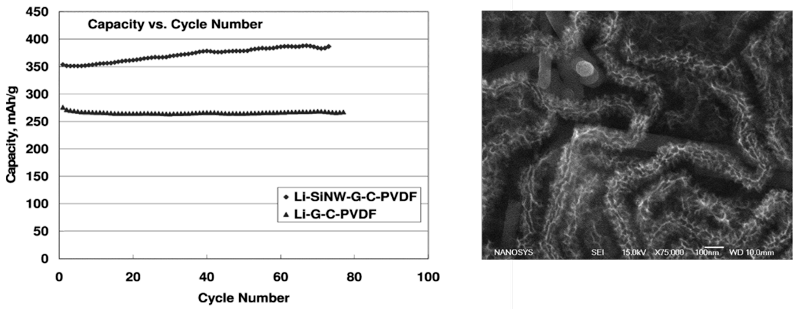Nanostructured materials for batteries
Dr Tahsin Ali Kassam at Murgitroyd summarises a recently granted patent relating to nanostructured materials for battery applications.

In most commercially available lithium-ion batteries, the anode is typically a copper foil coated with a mixture of graphite powder and a polymer blend such as polyvinylidene difluoride (PVDF).
The cathode generally comprises a mixture of lithium transition metal oxides, PVDF and carbon black coated onto an aluminium foil. While graphite and lithium-cobalt-oxide are normally used, and have high coulombic efficiencies, there is a need for improved anode materials with superior storage capacity and thermal stability.
In March 2022, OneD Material Inc. was granted European patent EP3859830B1, designating the UK, titled Nanostructured Materials for Battery Applications. The patent claims a battery anode electrode comprising one or more silicon-comprising nanostructures, grown on and attached to a carbon-based powder that includes graphite particles of 5-50μm in size.
The nanostructures are in the form of nanowires having a core-shell structure. The use of a core-shell nanowire structure provides enhanced cycling performance, suggested to be due to the formation of passivating films on the nanowire surface. The core may include silicon and the shell may include carbon.

The nanowires have a diameter of 20-200nm, and a length of 0.1-50μm. Such high aspect ratios allow for electrons generated on the nanowires to be rapidly passed to the conducting electrode, while also providing increased flexibility during the volume changes associated with cycling between charged and discharged states.
The nanowires comprise lithium inserted into them. The ability of lithium to insert into the silicon nanowires can provide a dramatic increase in the capacitance of the anode. The nanowires can also accommodate the volume change associated with the insertion such that the anode remains structurally sound.
The electrode further comprises a carbon-based material. Optionally, the carbon-based material may be selected from carbon black, graphite, graphene, graphene powder and graphite foil.
The electrode further comprises a conductive polymer that is disposed on the nanostructures. The conductive polymer may serve as a binder material when forming the electrodes. It may be polypyrrole, polythiophene, polyethylene oxide, polyacrylonitrile, poly(ethylene succinate), polypropylene, poly(β-propiolactone), a sulfonated fluoropolymer, polyimide, or poly(acrylic acid).
The electrode comprises 1-80wt.% of the nanostructures disposed on the carbon-based powder. The patent further claims a battery comprising an anode as described above, a cathode, and a separator positioned between the anode and cathode.
The provision of silicon nanowires in the anode was found to increase its capacity and cycle life. The graph above shows the anode capacity as a function of cycle number for a control anode comprising 80% graphite with 10% carbon and 10% PVDF (Li-G-C-PVDF), compared with an anode according to the present invention in which 10% of the graphite has been replaced with 10% silicon nanowires (Li-SiNW-G-C-PVDF).
The results showed a significant increase in the capacity of the Li-SiNW-G-C-PVDF anode comprising the silicon nanowires as compared with that of the Li-G-C-PVDF anode.
The increase in capacity with a corresponding increase in the number of cycles is postulated in the patent publication to relate to the surface of the nanowires. Initially, the nanowires exhibit smooth surfaces which subsequently become textured, as shown in the SEM micrograph. This provides a resulting increase in the interfacial area between silicon and the ion conductor, and a shortening of the diffusion pathways for lithium in the silicon nanowires.
Read the full patent here: bit.ly/37hVQQC

